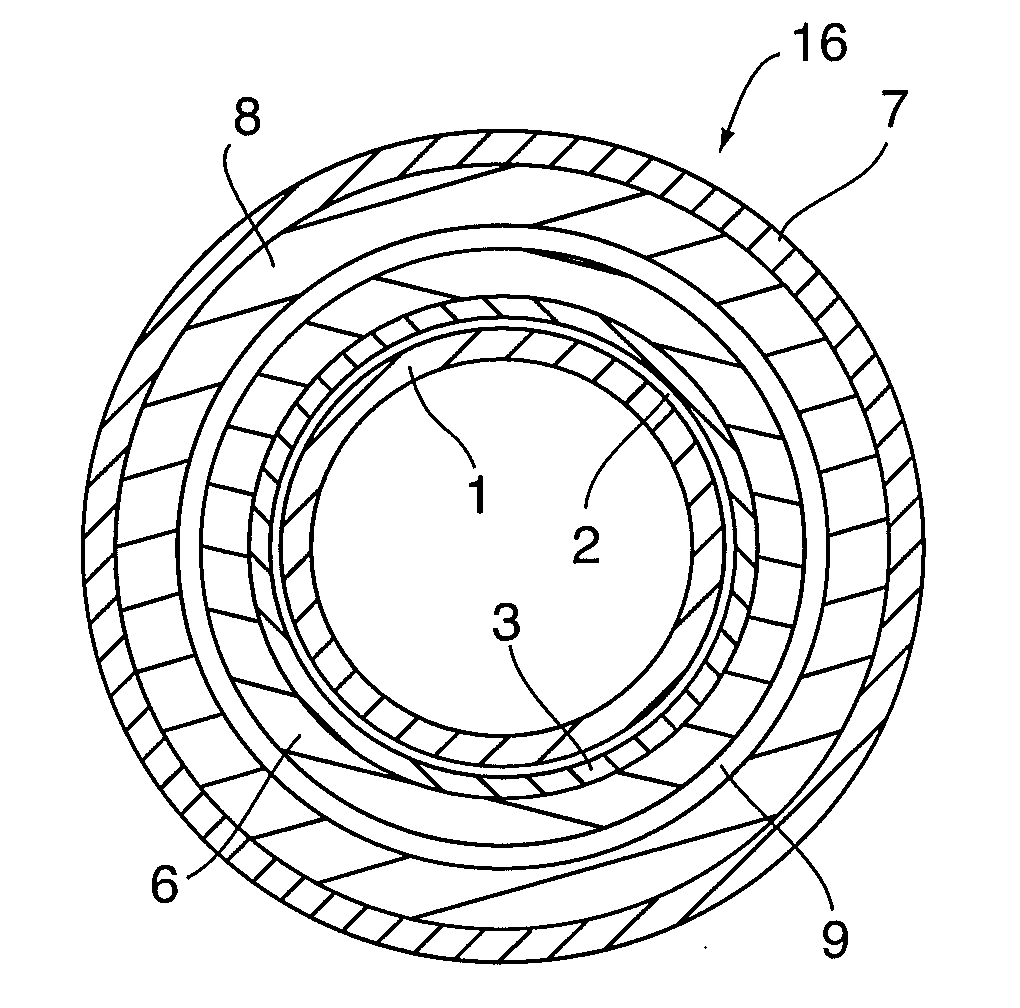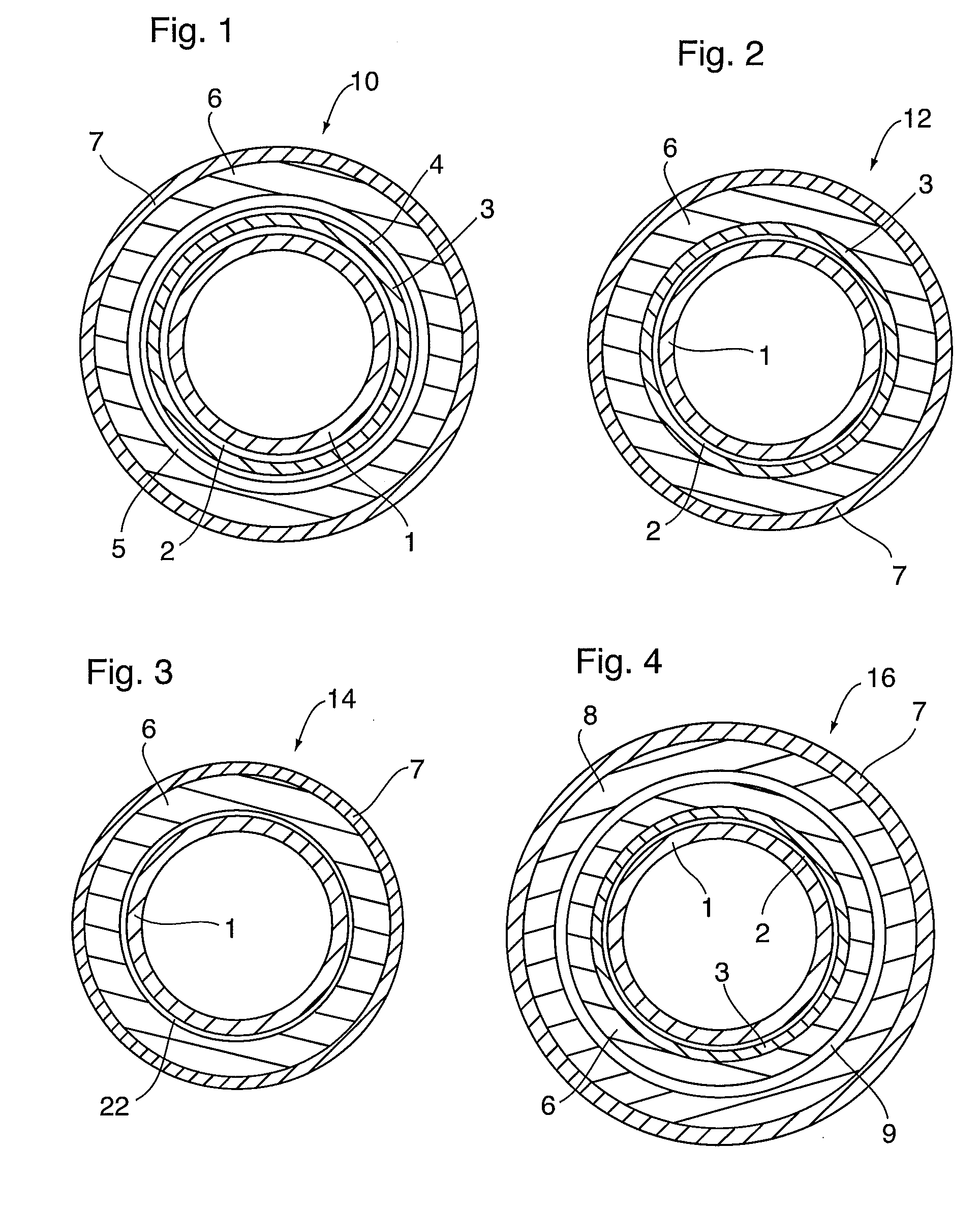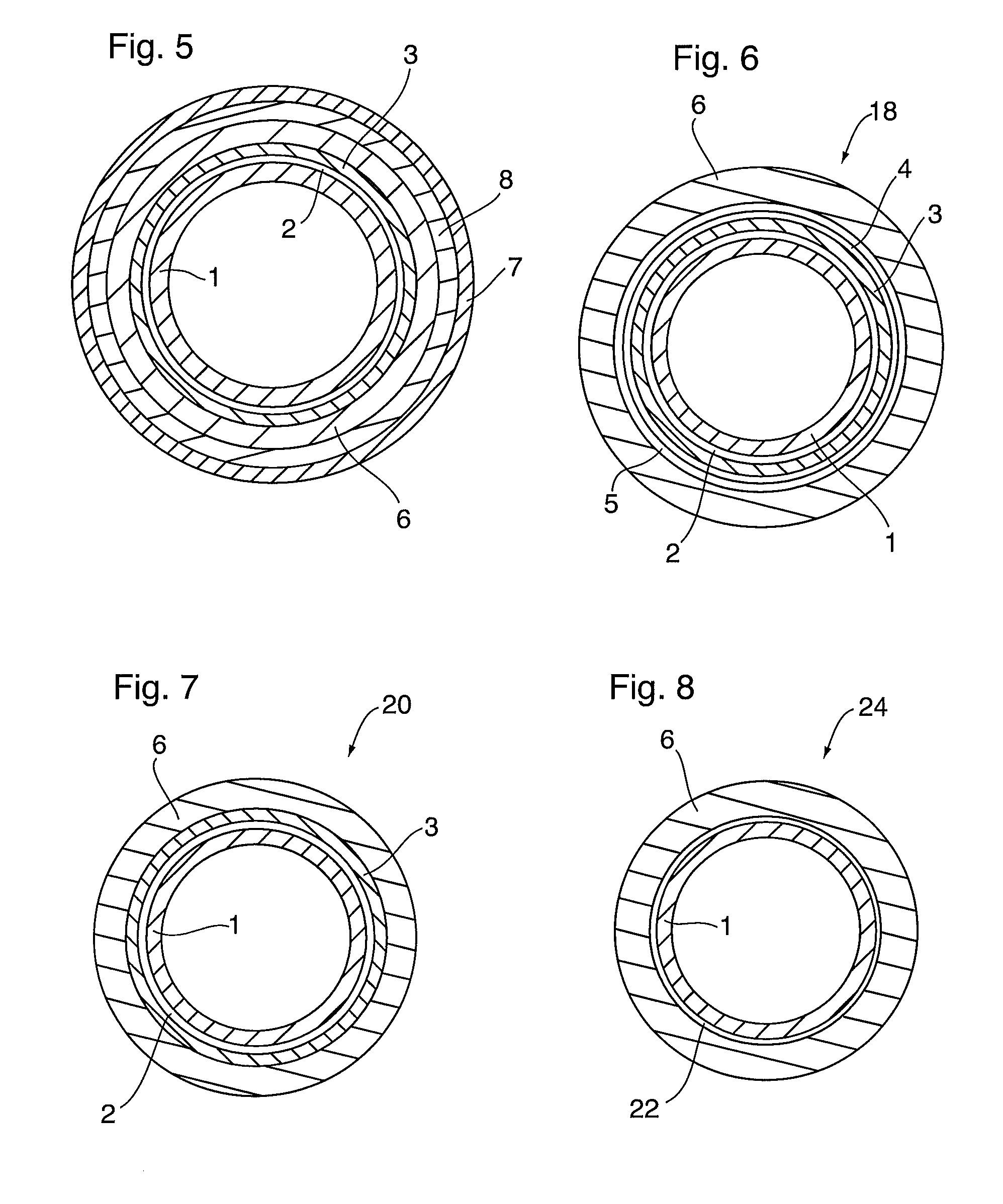High temperature insulated pipelines
a technology of pipelines and insulated conduits, applied in the direction of corrosion prevention, coatings, auxilary devices for sludge, etc., can solve the problems of reduced or lost production, reduced or omitted conduits, and the need to replace pipeline sections or entire systems with corresponding loss of asset valu
- Summary
- Abstract
- Description
- Claims
- Application Information
AI Technical Summary
Benefits of technology
Problems solved by technology
Method used
Image
Examples
first embodiment
[0066]FIG. 1 illustrates a transverse cross-section of an insulated oil and gas pipeline 10 according to a The insulated pipeline 10 includes one or more sections of steel pipe 1 in which the insulating and protective coating includes a three-layer corrosion protection system. According to this system, the steel pipe 1 is coated with a corrosion protection layer 2 comprised of a high temperature corrosion protection material as described below, an intermediate first adhesive layer 3 applied over the corrosion protection layer 2, and a first protective topcoat 4 applied over the first adhesive layer 3. The first protective topcoat 4 provides added corrosion and mechanical protection and the adhesive layer 3 provides an adhesive bond between the topcoat 4 and the underlying corrosion protection layer 2. The topcoat 4 is shown in FIG. 1 as a relatively thin layer between the adhesive layer 3 and the overlying insulation layers described below. The composition and thickness of the topc...
third embodiment
[0068]As an alternative to the multi-layer corrosion protection systems illustrated in FIGS. 1, 2 and 4, the steel pipe 1 may instead be provided with a single-layer composite corrosion protection layer wherein the high temperature corrosion protection material described below, adhesive and polymer topcoat components are pre-mixed and applied onto the pipe 1 as a variably graded coating. FIG. 3 illustrates a transverse cross-section of an insulated oil and gas pipeline 14 according to the invention. The insulated pipeline 14 includes one or more sections of steel pipe 1 provided with such a single-layer composite corrosion protection coating 22.
[0069]In the insulated oil and gas pipelines according to the embodiments disclosed herein also comprise one or more thermal insulation layers. The pipelines 10, 12 and 14 illustrated in FIGS. 1 to 3 include only a first thermal insulation layer 6, whereas the pipeline 16 of FIG. 4 is provided with a first (inner) insulation layer 6 and a sec...
PUM
| Property | Measurement | Unit |
|---|---|---|
| Temperature | aaaaa | aaaaa |
| Temperature | aaaaa | aaaaa |
| Temperature | aaaaa | aaaaa |
Abstract
Description
Claims
Application Information
 Login to View More
Login to View More - R&D
- Intellectual Property
- Life Sciences
- Materials
- Tech Scout
- Unparalleled Data Quality
- Higher Quality Content
- 60% Fewer Hallucinations
Browse by: Latest US Patents, China's latest patents, Technical Efficacy Thesaurus, Application Domain, Technology Topic, Popular Technical Reports.
© 2025 PatSnap. All rights reserved.Legal|Privacy policy|Modern Slavery Act Transparency Statement|Sitemap|About US| Contact US: help@patsnap.com



